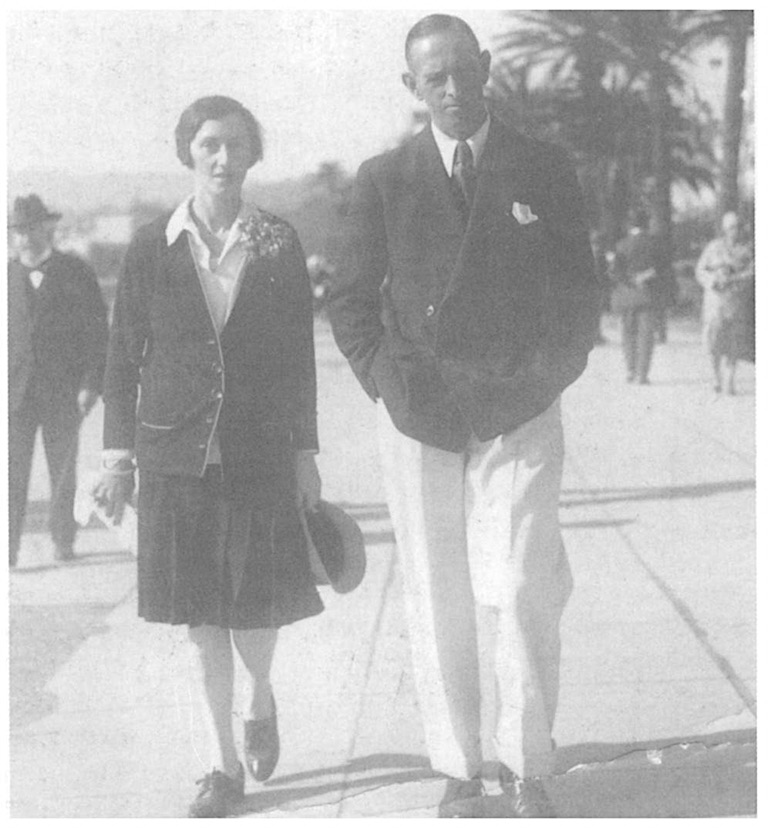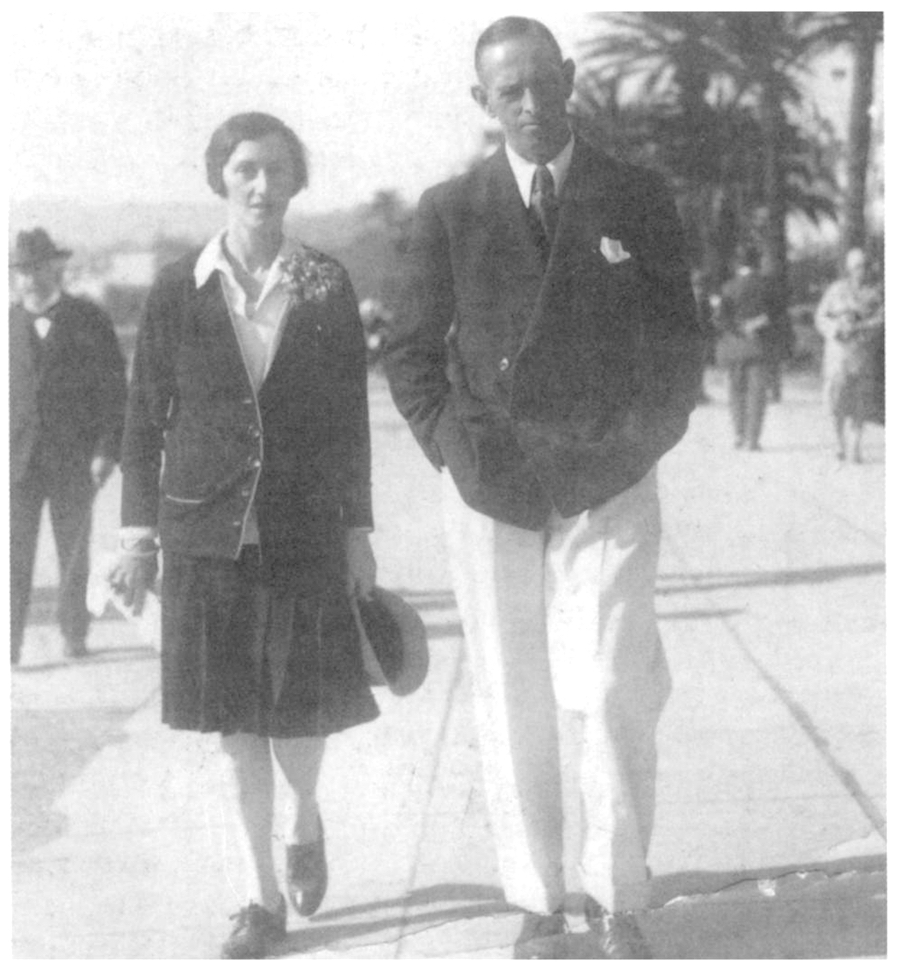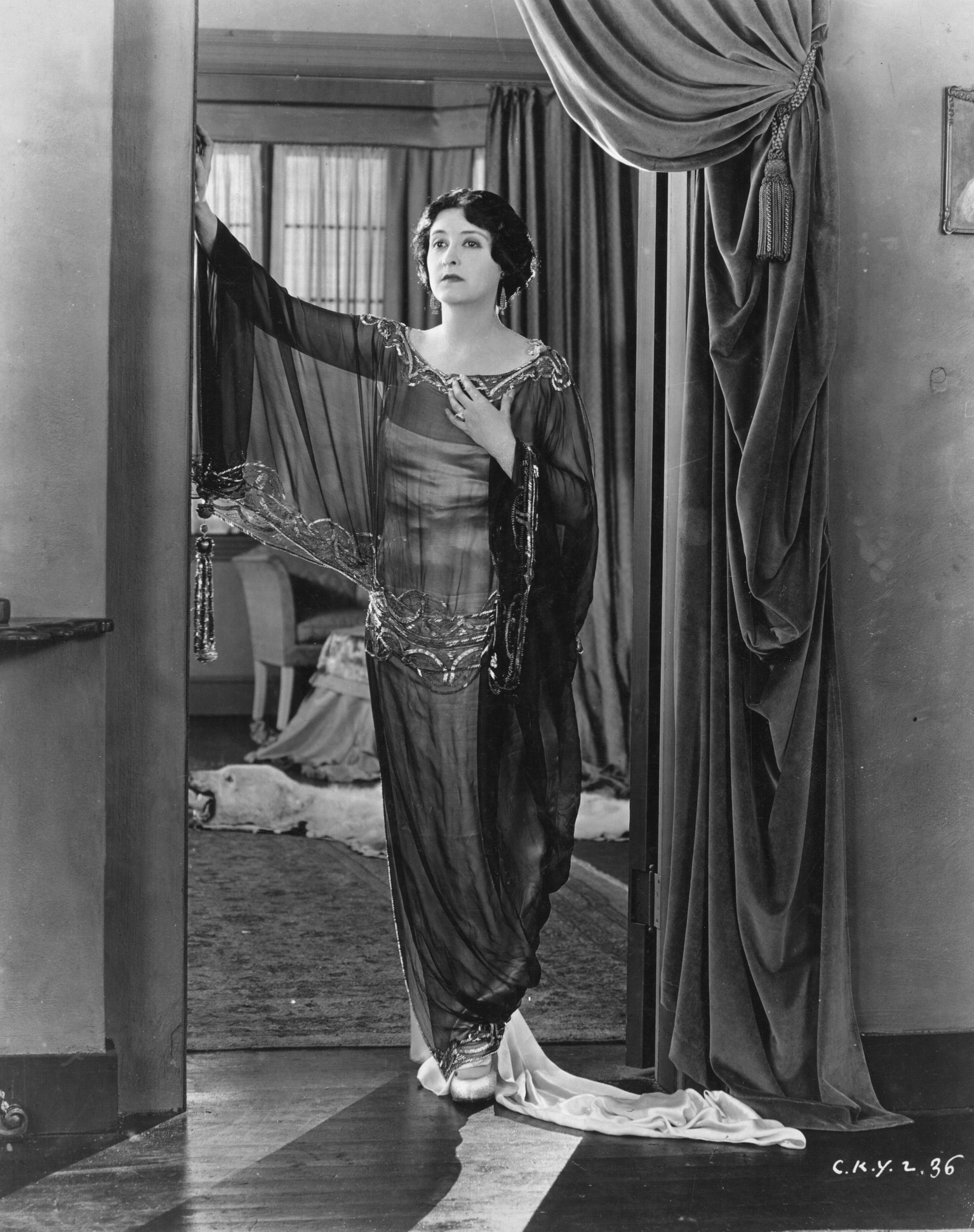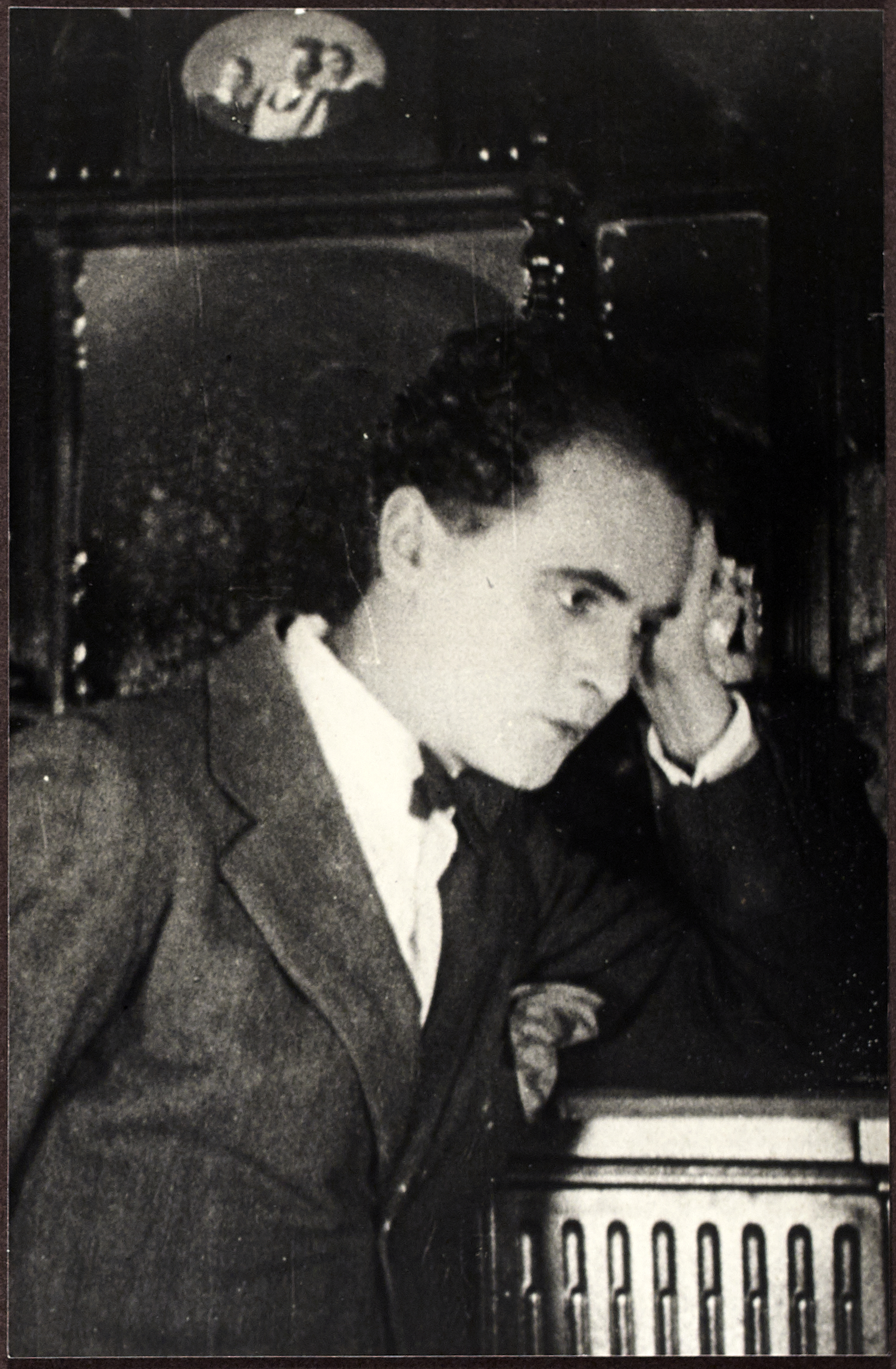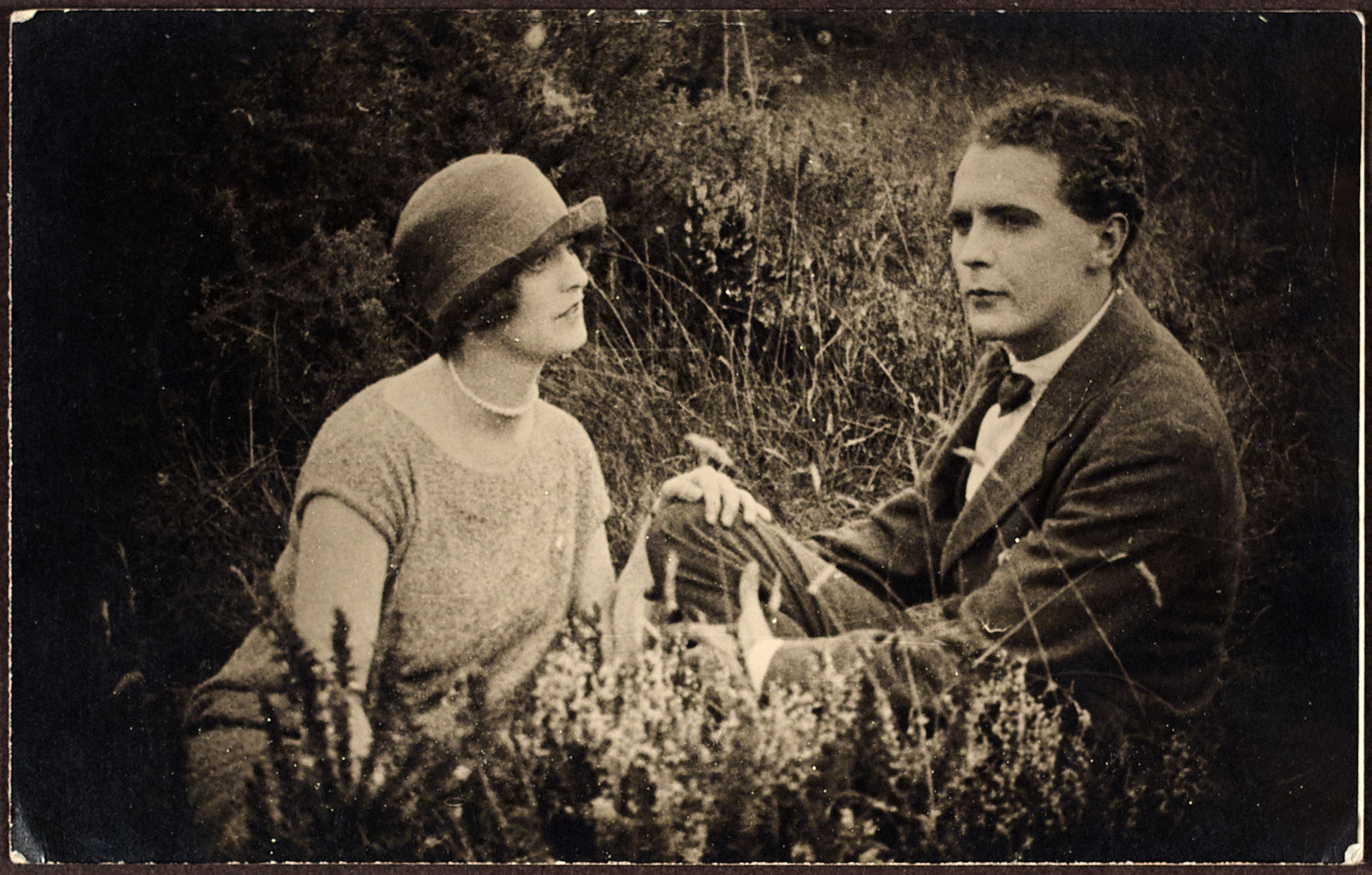Silent films in Ireland from 1914 to 1935 focused on Irish rural life, the long struggle for independence from Great Britain, and the civil war that raged from 1922-1923 over the formation of the Irish Free State. Films like those from producers Ellen O’Mara and James Mark Sullivan’s indigenous Film Company of Ireland (1916-1920) specialized in romantic comedies/dramas of Irish life and historical melodramas on the Protestant Ascendency and its exploitation of Irish Catholic tenants. Screenwriter Mary Manning’s Guests of the Nation (1935) explored the Anglo/Irish War (1919-1921) and its devastating impact on the Irish countryside and its people. English-Irish author Dorothea Donn-Byrne worked in and outside this nationalist tradition. As Dolly Byrne, she provided the source material for Enter Madame (US 1922), a drawing room comedy about a self-absorbed opera singer and her troubled marriage, and, as Dorothea Donn Byrne, she wrote the original story for Land of Her Fathers (IE/US 1925), a romantic drama set against the backdrop of the Anglo/Irish War. In her prolific career, Donn-Byrne wrote for the stage and screen, and penned essays and short stories on a variety of topics that reflected the political and popular culture of the Anglo/Irish/American societies in which she lived. Her work in cinema points to the early dependence on source authors and story writers—particularly women—the nature of their contribution as cinematic authors, and the uncertainty surrounding their involvement in production.
Despite Donn-Byrne’s productive writing career, very little has been written about her life and work. With a scarcity of biographical information, the following digitized records have proven invaluable in piecing together her early life and career as a teacher and writer: England & Wales, Civil Registration Birth Index, 1837-1915; National Archives: Census of Ireland 1901/1911; UK, Incoming Passenger Lists, 1878-1960; and New York, Passenger and Crew Lists (including Castle Garden & Ellis Island), 1820-1957. These databases indicate that Donn-Byrne was born to Irish parents in Seacombe, Cheshire, near Liverpool where her father, a merchant naval officer for Lamport & Holt, was based. Her mother died in childbirth as did Donn-Byrne’s twin (“Dorothy Mary Cadogan” n.p.). Since her father was frequently at sea, sailing from ports in the UK and New York, she was raised mainly by her grandfather in various locations throughout Dublin and Waterford counties, though passenger records indicate she also lived with relatives in Liverpool and the surrounding areas (“Dorothy Cadogan” [National Archives] n.p.; “Dorothy M. Cadogan” 1903, 1908, n.p.). She frequently visited her father in New York both as a child and an adult. Later passenger records note her living in Dublin first as a teacher and then as a student (“Dorothy M. Cadogan” 1903, 1908, 1910, 1911, n.p.; “D. Cadogan” 1904, n.p.).
Donn-Byrne exhibited an early interest in the arts, reading literature at University College, Dublin, according to her friend, writer Margaret Widdemer’s 1964 memoir Golden Friends I Had (177). There, she met her first husband, Irish-American author Bryan Oswald Donn-Byrne (hyphen and prenames were dropped as an adult). Her husband always considered himself an Irish writer, though born in New York to Irish parents, according to John Bradley in “The Donn Byrne Story” (187, 189). When he was six, Donn Byrne, his sister, and mother (father’s whereabouts remain unknown) returned to the family home in County Armagh in Northern Ireland, where his education was shaped by cultural nationalism, something he shared with Dorothea (190-97). After university, the couple briefly parted ways, meeting up again in New York where they were married in 1911 (198). They first took up residence in Columbia Heights, Brooklyn, quickly found literary success, and started moving in the New York literary, theatrical, and visual artist communities, according to Thurston Macauley in Donn Byrne, Bard of Armagh (26-36).
While her husband wrote poetry, short stories, and novels steeped in Irish culture, Dorothea launched her literary career co-authoring (with Gilda Varesi) the 1920 play “Enter Madame,” a romantic comedy set in Boston’s opera scene. “Enter Madame” was one of only two works by Donn-Byrne (the other a scenario: A Heart Between Two Rugs, year unknown) that did not focus on Irish life and culture. Proceeds from the play’s successful run and her husband’s writing allowed them to purchase a home in Riverside, Connecticut (Macauley 59). The couple, however, spent money as quickly as they made it. After eleven years in the US, financial difficulties forced them to foreclose on this home and, according to Stanley J. Kunitz, return to England and Ireland (“Authors Home Attached” 21; Kunitz 122, 123). The couple’s combined literary earnings and her husband’s gambling allowed them to lease and eventually buy Coolmain Castle, Co. Cork, in 1926 (Macauley 147, 156). They divided their time between England and Ireland with occasional trips to the US; however, they often lived, wrote, and traveled apart, something common in the early years of their marriage. Widdemer’s memoir and Mary E. Keller’s study of Bryan’s life and work both attribute this arrangement to Donn-Byrne’s frustration with her husband’s drinking and gambling (Widdemer 164, 178, 183, 185; Keller 28). Two years after buying the castle, he tragically died in a car accident (“Swerving Car’s Fall Into the Sea” 5).
By the time of her husband’s death, Donn-Byrne already had made a name for herself in theatrical and cinematic circles. She was busy raising twins when she collaborated with lead actor Varesi on “Enter Madame,” which was influenced by Varesi’s own stage career (Patterson 360). The hugely successful romantic comedy follows a self-centered opera singer and her troubled marriage. The play opened on August 16, 1920, at New York’s Garrick Theatre and, according to Thomas S. Hischak’s Broadway Plays and Musicals, ran for 350 performances (“‘Enter Madame’ Fills the Garrick” 8; Hischak 529). The play’s popularity and critical reception led New York Times drama critic Alexander Woollcott to include it in his top ten list of the 1920-1921 season (1). “Enter Madame” also had runs in Washington, D.C., Philadelphia, Minneapolis, and Chicago, as well as London (“Important Plays Among Offerings” 1; “Enter Madame” [Evening Public Ledger] 16; “The Theaters” 7; “Enter Madame” [Chicago Tribune] 21; “Enter Madame” [The Times] 8). As “Enter Madame” was closing in New York, Donn-Byrne also had a small role in the musical revue “Some Party” (as Dolly Byrne), which opened on April 15, 1922, at Jolson’s 59th Street Theatre and promptly closed after seventeen performances (“Some Party” n.p.). Donn-Byrne showed no further interest in acting, instead devoting her career to writing.
Donn-Byrne began exploring Irish themes in her second play, the less successful “The Land of the Stranger” (1924), which follows the difficulties of Irish expatriates in the US who return to Ireland. Loosely based on her husband’s experience moving between New York and Northern Ireland, the play focuses on Pat McCann, a Brooklyn-based Irishman, who returns to his homeland in County Armagh only to find that he has become more like the stereotyped Irish featured in American theater. According to studies by Margaret McHenry and Robert Goode Hogan and Richard Burnham, “The Land of the Stranger” featured the Belfast Players and opened on December 8, 1924, at the Gaiety Theatre in Dublin and on December 15, 1924, at the Opera House in Belfast (McHenry 53, 55; Hogan and Burnham 231-32). Early reviews were poor, but the play underwent considerable revisions with more successful runs at the Belfast Empire Theatre in 1929 and Dublin’s Abbey Theatre in 1931 (“The Land of the Stranger” 4; Programme 1931, n.p.). The Irish Times reported that after a weak showing in Dublin in 1924, the revised play was later “received with complete approval by a large audience” (Quidnunc 4). The reviewer praised Donn-Byrne’s cultural authenticity and called the rewrite a “shrewdly ironic commentary upon those sentimental ‘exiles,’ whose dream is now so far from reality” (4). This proved to be Donn-Byrne’s final play. According to McHenry, she quickly lost interest in the art form (68).
Donn-Byrne’s writing career, however, was not over; it just took another turn. By the 1920s, she joined the ranks of the many women writers who contributed to early cinema in a variety of capacities. While still in repertoire, “Enter Madame” was adapted for the screen by Frank Beresford who stayed faithful to the original material. Directed by Wallace Worsley, the film starred Clara Kimball Young in the Gilda Varesi role. Enter Madame played in small and large cities in the US, including New York, Boston, Philadelphia, Tulsa, Annapolis, Washington D.C., Lima (Ohio), and Elwood (Indiana), as well as abroad in places like Nottingham and Derby in England (“Enter Madame” [The Evening World] 16; “Boston’s Capitol Will Open” 534; “Enter Madame” [Evening Public Ledger] 15; “Something about ‘Enter Madame’” 16; “Enter Madame” [The Evening Capital] 4; “Photoplays” 24; “‘Enter Madame’ Pleases Quilna Audiences” 19; “Enter Madame” [The Call-Leader] 6; “Local Amusements” 5; “Amusements in Derby” 2). Available research provides no information as to whether Donn-Byrne was involved in other aspects of this production or what she thought of the film.
Reviews were generally positive, highlighting the film’s production value, the narrative’s cleverness, and the impact on Young’s struggling career, rarely crediting or commenting on Varesi and Donn-Byrne as source authors. Photoplay selected the film as one of the seven best films of the month, noting “this picture is entertaining, splendidly directed and has an amazing subtlety” (“The Shadow Stage” 63; “The National Guide to Motion Pictures” 64). In Moving Picture World, C.S. Sewell called Enter Madame a “clever and unusually subtle comedy” (182). Abroad, the film was credited as having a “novel finish” by the Nottingham Evening Post, which also noted that “Miss Young, as usual, wears some wonderful dresses” (“Local Amusements” 5). The Derby Daily Telegraph addressed the film’s narrative, observing that “The story is told in an interesting manner, with touches of humour, and makes quite a good picture” (“Amusements in Derby” 2). A number of reviewers focused on how the film gave Young’s career a much-needed boost. Variety’s “Fred” argued that the film resurrected Young’s failing career: “In this picture Miss Young is giving a performance better than most she has done in the past two or three years” (33). The Lima News believed this was Young’s best work to date. This review was one of the few to acknowledge source authors Varesi and Donn-Byrne, adding that the film was “winning as much favor on the silver screen as did the original production” (“‘Enter Madame’ Pleases Quilna Audiences” 19). Similarly, the aforementioned Photoplay review attributed the film’s success to Varesi’s and Donn-Byrne’s “excellent basic material” (63). Such reviews, however, were uncommon. The article by “Fred” in Variety ignored the source authors completely, crediting “Adaptation of the play of the same title by Frank Beresford” (33). With few exceptions—for example The Evening Capitol and The Evening Public Ledger—advertisements also failed to mention the source authors, even though the play’s success could have been used as a marketing tool (“Enter Madame” 4; “Enter Madame” 15). One explanation for this absence is that by the 1920s writing in Hollywood had become an assembly line of production with the last hand on the script often receiving the credit.
Donn-Byrne’s contribution to the film Land of Her Fathers points to crediting problems faced by women writers who wrote original stories for the cinema. It is unclear whether Donn-Byrne sent Irish producer Séan Hurley an unsolicited manuscript or if he requested she submit a story for his film. The story was never published and there is no record of any correspondence between Donn-Byrne and Hurley, though she made frequent trips to New York in the 1920s when Hurley was gathering his American crew for filming in Ireland. A 2004 letter and attached film notes from Maureen Hurley, the producer’s daughter, to Sunniva O’Flynn, head of Irish programming at the Irish Film Institute, does refer to “Dorothea Donn Byrne” as the scriptwriter (Hurley n.p.). However, Maureen may have confused “original story” and “script.” Furthermore, the shot list for the fragments held at the RTÉ identify director Herbert Hall Winslow as the writer with no mention of Donn-Byrne, though this credit probably refers to his adaptation (Chatterjee n.p.). Irish film scholar Kevin Rockett in Cinema and Ireland notes only that “Dorothea Donn Byrne…provided the story” (57).
Donn-Byrne’s authorship here is complicated further by reviews that do not give her writing credit and a screening history shrouded in mystery. Reviews of the “rough cut” shown at the Grafton Cinema in Dublin on October 1, 1925, praised the indigenous qualities of the film and the strength of its narrative, never mentioning Donn-Byrne. F.S. in the Evening Herald found “a complete absence of any of the stage Irishness common to all previous attempts at native picture-making” (6). And the Irish Independent believed “The story of the film has much in it that will make a universal appeal” (“A New Irish Film” 8). The British trade paper The Bioscope also gave it a positive review, calling the film “a brave attempt to start a film industry in this country,” suggesting there were plans for public screenings in Ireland and possibly England (“Land of Her Fathers” 75). However, there is no record that the film was screened in Ireland or England, and complete prints, which might shed light on writing credits, have disappeared. Soon after the Grafton showing, according to both Hugh Oram and Hurley’s daughter, the producer gave a copy of the completed film to the American distributors with the intent that they would work together on the US screenings. The distributors, however, disappeared with the print and screened the film in several US cities (Oram 13; Hurley n.p.). Research thus far, however, has uncovered no details on screening locations or dates. Hurley’s copy of the film also has disappeared. Maureen notes that her father presented his print to the National Library in Dublin, but film historian Liam Ó Laoghaire (O’Leary) could not find that print for his 1976 “Exhibition of Irish Cinema” at the Douglas Hyde Gallery, Trinity College Dublin (Hurley n.p.). Correspondences between Herbert Hall Winslow and James Wingate, Director of the Motion Picture Division of New York’s State Education Department at the New York State Archives, point to the existence of a third copy of the film, but this too has been lost. Per the Certificate of License held in the New York State Archives, Winslow was granted the license to screen the film in the State of New York after the requested eliminations were made. He even reserved a projection room, but again there is no evidence of screenings and the New York State Archives has no copy of the film (“Order on Projection Room” n.p.). Furthermore, there is no print of the film in the Winslow holdings at the Hasting’s Historical Society in Westchester, New York, according to its president Natalie Barry (Barry n.p.), even though correspondences between Wingate and Transatlantic Film Co. indicate that Winslow’s home at 587 Broadway, Hastings-on-the-Hudson, served as the production company office. The whereabouts of Donn-Byrne’s only Irish film of the silent era remain unknown.
Though Land of Her Fathers is lost, fragments, newspaper reviews, stills and correspondence in the O’Leary Archive, and eliminations Winslow made for a US screening license provide enough information to determine the film’s plot, which clearly bears the imprint of Donn-Byrne’s interest in Irish history and culture and the US involvement in both. The film tells of a romance between an Irish woman and an Irish revolutionary during the Anglo/Irish War, a political theme common in early Irish cinema. There is also a villain, according to critic F.S. in an Evening Herald review (6). Eliminations indicate that the villain turns the hero over to the Black and Tans: “I was a political prisoner and you know it, it was you who betrayed me to the Black and Tans” [Reel 4] (Winslow [March 19, 1928]). The eliminations further reveal an ideological conflict between Americans and Irish: “We in America do know what it means to fight for a principle” [Reel 2]; “You are an American and cannot understand” [Reel 4]; “I am Irish you are not, that is why you cannot understand” [Reel 6]. These Anglo/Irish/American influences on Donn-Byrne’s work are not surprising given her and her husband’s backgrounds. Though they were born outside of Ireland and lived in America, they grew up in Ireland and lived in the Irish Free State when it formed in 1922. As a result, they self-identified as Irish (Bradley 220, 197-98). The Anglo/Irish War had just concluded when Donn-Byrne crafted her story of the Irish struggle for independence from Britain and America’s view of that fight. Producer Hurley, a political activist, shared Donn-Byrne’s interests. After traveling extensively in China and the US, he returned to Ireland in 1915 and was close political friends with Michael Collins, a leading figure in Ireland’s struggle for independence (Oram 13). Hurley produced Land of Her Fathers for the American company Transatlantic Pictures, founded by Irish-born American James Sullivan. Intrigued by the idea of an Irish/American co-production, Hurley brought US distributors and crew (director Winslow and cameraman Walter Pritchard) to Ireland and drew his cast predominantly from Dublin’s Abbey Theatre, which supplied actors for many of Ireland’s indigenous silent films (Slide 18; Oram 13).
Donn-Byrne departed sharply from her interest in Anglo/Irish affairs with her only film adaptation, A Heart Between Two Rugs, housed in the Billy Rose Theatre Division of the New York Public Library. The date of the adaptation remains a mystery and there is no evidence it was ever produced. However, a stamp on the first page indicates it was the property of Dr. Edmond Pauker, a literary agent who worked in New York in the 1920s and 1930s primarily with European authors. The 52-page adaptation is structured more like a scenario with its chapter summaries, and is identified as such in the library catalogue. A Heart Between Two Rugs is a comedy of errors following the romantic trials of Toto Sugarbean who inherited his father’s wealth after a tragic accident in a sugar refinery. The scenario’s whimsical tone is more in keeping with Donn-Byrne’s first play, “Enter Madame,” than her later more serious Irish-themed writings.
Donn-Byrne’s writing continued to influence cinema in 1930s. While still in repertoire, “Enter Madame” was adapted for the radio and remade as the musical Enter Madame! (US 1934) starring Cary Grant and Elissa Landi (“Ft. Humphreys” A-6; “Local Drama Guild” C-2). Elliott Nugent directed the film from an adaptation by Gladys Lehman and Charles Brackett. Enter Madame! suffered from mediocre reviews that often praised the stars and director, but found the story hackneyed. F.S.N. in “A Farce with Music” called the cast “hard-working,” but found the ending “contrived” and “the theme, not exactly novel” (12). H.M. in “Grand Opera in the Making of this Film” wrote that “Elissa Landi’s charm and beauty, Cary Grant’s likeable nature, Lynn Overman’s amusing comedy relief, a fine musical score, and Elliot Nugent’s light treatment, make of ‘Enter Madame,’ now at Columbia, an entertaining film.” The reviewer added, however, “there is nothing to be excited about in the story” (B-12). Once again, Donn-Byrne and Varesi are rarely mentioned in reviews, though Variety’s “Chic” managed to correct the trade’s earlier confusing statement regarding authorship, noting that this later version is based on the stage play by “Dorothea Donn Byrne” and Varesi (Chic 63).
Donn-Byrne returned to her interest in Irish culture with the original story for her next film, Irish and Proud of It (NIR/UK/IE 1936), which had a mixed reception in the US, but fared better in Ireland where her authorship was frequently acknowledged in previews and reviews. Richard Hayward, whose Belfast Repertory Theatre Company brought her earlier play, “The Land of the Stranger,” to Belfast and Dublin, stars as an Irishman in London who returns to his native Ireland, falls for a young “Colleen,” and struggles with a mob of Chicago gangsters. B.C. in The New York Times gave the film an unflattering review, noting that this Irish-made film is more Hollywood than indigenously Irish with its “Irish ballading and some pretty scenes of Irish countryside” (12). In sharp contrast, The Irish Press, found “no touch of the stage-Irishman that has condemned so many films presuming to represent Ireland (“‘Irish and Proud of It’” 7). However, what is significant here is that The Irish Press perceived Donn-Byrne’s contribution as a selling point. The newspaper extensively covered the production in the months leading up to its release, frequently mentioning Donn-Byrne’s authorship. In July, “Another Irish Film” noted that “the story for the film has been written specially by Mrs. Dorothea Donn Byrne” (2). And in August, “Films of the Week” announced the film’s production, calling it “Mrs. Dorothea Donn Byrne’s ‘Irish and Proud of It” (MacG 5). Reviews like “‘Irish and Proud of It’” also acknowledged Donn-Byrne’s authorship: “…screened from a story by Dorothea Donn Byrne” (7). Donn-Byrne’s visibility in the industry was growing.
Irish and Proud of It, however, proved to be Donn-Byrne’s final contribution to cinema, though her interest in Irish arts never faltered. Throughout the 1930s, she served as an editor, arts manager, essayist, and short story writer. After her first husband’s death, she traveled between New York and Coolmain Castle overseeing reprints of his Irish works, according to newspaper reports (“Widow of Donn Byrne Here” 34; “Tea for Mrs. Dorothea Donn-Byrne” 20), and, in 1934, she edited Poems by Donn Byrne. According to Irish and US newspapers, Donn-Byrne also served as general chair of the art rooms at New York’s Irish Theatre in the late 1920s and early 1930s (Quidnunc 4; “Irish Theatre Asks Shaw” 2). Furthermore, in 1929 and 1930, Donn-Byrne wrote articles on Ireland, an Irish woman’s view of American fashion, and British horse racing for the American Vogue (“Ireland in 1929,” “An Irishwoman Looks at the Mode,” and “The Grand National”). She also wrote short stories on Irish life that were published in The Saturday Evening Post in 1933 (“The Turn of the Wheel” and “Eliza, Soldier of Fortune”) and Redbook Magazine in 1935 (“Bad Beginnings”).
By the early 1940s, however, Donn-Byrne had lost all interest in writing. After the death of her second husband, Willoughby Craig, whom she married in 1929, she moved to London with her daughter Jane (“Mrs. Donn Byrne Wed to Willoughby Craig” 19; “Fatally Injured at Work” 6). She worked for Lutterworth Press, a publishing company outside the city, and became part of the Chelsea artist community, socializing in a film and literary circle that included Welsh writer Dylan Thomas and his wife Caitlin and Irish food writer and film/theater actress Theodora FitzGibbon who later married Irish filmmaker George Morrison (FitzGibbon 153-54). FitzGibbon’s memoir notes that in their Chelsea gatherings “there was always a drink, endless cigarettes…and stories from Dolly” (154). Little is known of Donn-Byrne’s life after the war, except that her daughter Jane tragically died (153). This may have prompted her to move from London to Brighton where she died in 1963 (“Dorothea Mary Elizabeth Antonia Craig” 716).
Information on Donn-Byrne’s life and work is scarce. Her husband’s prolific and public writing career often overshadowed her own literary and film successes. In search of a more complete understanding of Donn-Byrne’s contribution to early cinema, researchers struggle to piece together material from friends’ memoirs and books, a few scholarly references, and newspaper coverage of her husband’s life and literary output. Future research needs to determine the full creative output of a woman who worked in an industry heavily reliant on source authors and original story writers. Donn-Byrne is part of a larger untold story, that of the female author in early cinema, their writing, authorship, and participation in film production.

